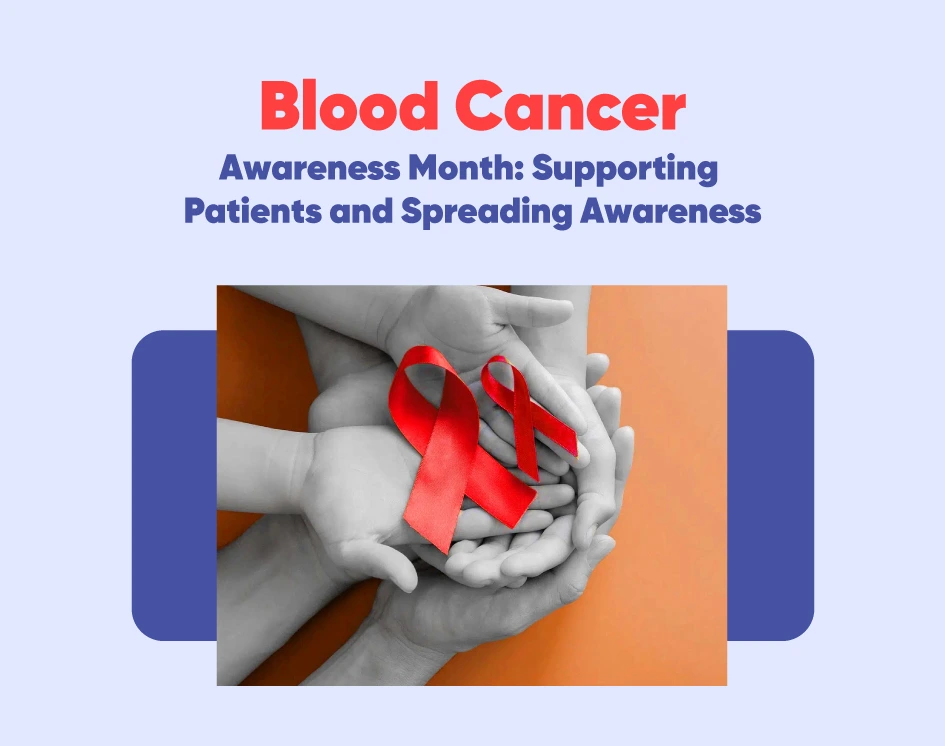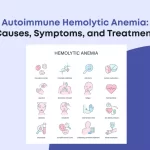
Blood Cancer Awareness Month: Supporting Patients and Spreading Awareness
To make people and institutions aware of both onco-hematological diseases such as leukemia, lymphoma, and myeloma, and the needs of patients and their families and to encourage medical-scientific research in order to obtain increasingly effective and decisive treatments. It is with these objectives that the month of awareness of hematological tumors is celebrated in September, with thousands of new cases diagnosed every year,
September is Blood Cancer Awareness Month, which is dedicated to information and awareness about hematological cancers. These are pathologies that affect the bone marrow, blood, and lymphatic system that derive from the proliferation of two cytogenises: myeloid and lymphoid cell lines. While these neoplasms remain relatively obscure, each passing year witnesses the diagnosis of one case of leukemia, lymphoma, or myeloma every 35 seconds, comprising the three principal categories of hematological cancers.
Leukemias, arising from uncontrolled hematopoietic stem cell growth, represent a well-known subset of blood cancers. They diverge into myeloid and lymphoid lineage-based variants. Shockingly, among men aged 0-49, leukemias rank as the fourth leading cause of cancer-related deaths. Lymphomas and myeloma, although less recognized, hold their own intricacies. Lymphomas result from lymphocyte multiplication, divided into Hodgkin’s and non-Hodgkin variations. Myelomas, on the other hand, are marked by plasma cell proliferation and alteration.
Cancer treatment for these particular subgroups involves intricate and tailored therapeutic approaches, although the grim reality remains that most cases still end in fatality. Nonetheless, since the 1960s, survival rates exceeding five years have shown remarkable improvement, with onomatology advancing swiftly and introducing novel and promising treatment modalities. Alongside conventional chemotherapy and radiotherapy, precision medicine targeting specific cellular markers or gene therapy, which can genetically reprogram immune cells to identify and combat tumors, are viable alternatives.
A Glimpse into History
Blood Cancer Awareness Month is pivotal in bolstering fundraising initiatives and spreading awareness about blood cancer. The Leukemia and Lymphoma Society launched a grassroots movement in the early 2000s to raise awareness about blood-related cancers like leukemia, lymphoma, and myeloma. This month has truly emphasized the importance of researching new and effective treatment options for patients. It’s also crucial for patients and their families to have access to strong support networks to help them navigate through their health journey. This observance has evolved into a global movement throughout the years. Worldwide, organizations and people have joined together to educate the public, offer critical resources, and actively push for advancement in blood cancer research and therapy.
The Silent Nature of Blood Cancer
Blood cancers carry the epithet of being “silent diseases,” primarily because they target blood cells, making early detection a formidable challenge. Symptoms often appear nonspecific, mimicking fatigue or flu-like sensations. Conditions like myeloma, leukemia, and lymphoma, more commonly affecting individuals over 60, manifest with breathlessness, pallor, and unexplained weight loss. Unfortunately, many remain uninformed about the warning signs and nuances of blood cancer, leading to delayed diagnoses.
This delay poses a particularly grave concern for certain blood cancers, especially myeloma and lymphoma types. Advanced-stage diagnoses limit treatment options and diminish survival prospects. Hence, there is an imperative need to raise awareness, facilitating early detection and bolstering the odds of successful intervention.
The Spectrum of Blood Cancers
Blood cancers encompass three primary classifications:
- Leukemia, typically characterized by the presence of aberrant cells circulating in the bloodstream;
- Myeloma, which primarily manifests through bone lesions;
- Lymphomas, primarily impacting the lymph nodes.
Each of these categories encompasses numerous distinct entities, each with varying prognosis and treatment approaches. This diversity originates from hematopoiesis, the process responsible for producing and renewing blood cells, along with cells involved in immune responses.
From the foundations of hematopoiesis to the array of blood cancers,
Blood primarily consists of:
- Red blood cells, responsible for oxygen transport
- Platelets, facilitating blood clotting
- White blood cells, defending the body against infections. Found in the blood, lymph, and lymphoid organs such as lymph nodes and spleen, white blood cells comprise various types, including granulocytes (polynuclear cells), which act as the first line of defense against viruses and bacteria, monocytes capable of engulfing an “enemy” to isolate characteristic fragments, and lymphocytes (T and B cells) playing a central role in the immune response, particularly in antibody production.
Observing Blood Cancer Month
To broaden one’s understanding of blood cancers, it is vital to grasp the associated risk factors. Initiatives should include exploring family medical histories and ensuring their inclusion in medical records. Participation in fundraising events, such as races or memorials, can also contribute significantly to supporting research endeavors.
The observance of Blood Cancer Awareness Month serves as a pivotal means of raising awareness and disseminating knowledge about this condition. This dedicated period remains crucial for shining a light on blood cancer, offering support to those impacted, and advancing research toward a cure.
The Significance of Blood Cancer Awareness Month
This month holds significance due to its dedication to shedding light on the prevalence and impact of blood malignancies, including leukemia, lymphoma, and myeloma, on individuals and communities across the globe. It plays a crucial role in enhancing public awareness regarding these frequently life-threatening illnesses, promoting early detection, nurturing unity among patients and their families, rallying backing for research endeavors, and ultimately enhancing the prospects and the standard of living for individuals affected by blood-related cancers.
This awareness month fuels advocacy, education, and fundraising initiatives that enhance treatment and the search for a cure, providing hope and resources to countless people afflicted by these difficult disorders.
Conclusion
In conclusion, the observance of Blood Cancer Awareness Month is a crucial reminder of the prevalence and challenges of hematological malignancies such as leukemia, lymphoma, and myeloma. Recognizing their often subtle presentation and varied clinical manifestations is pivotal in early detection. Nevertheless, it is imperative to depend on the expertise of healthcare professionals for accurate diagnosis and treatment. Timely intervention can profoundly impact outcomes, offering optimism and an enhanced quality of life for individuals affected by these conditions. As research advances, awareness grows, and communities provide steadfast support, the battle against blood cancers continues progressing. This September, let us come together in our dedication to eradicating these ailments and offering unwavering assistance to patients and their loved ones.








